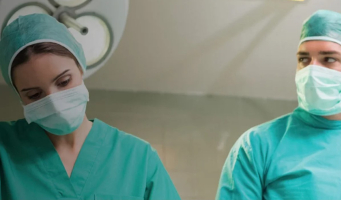Anaesthesia Fundamentals | Anatomy | Optic Pathways, Visual Fields, Motor and Sensory Innervation



Optic Pathways, Visual Fields, Motor and Sensory Innervation
Session Overview
Description
Applied anatomy of the nerve and blood supply of the eye. This session also covers basic optics.
Learning Objectives
By the end of this session you will be able to:
- List the nerves that transmit sensory information, provide sensation and autonomic innervation to the eye
- Describe the optical neural pathway
- Describe the neural pathway of the pupillary light reflex
- Identify the arterial supply and venous drainage of the eye
- Differentiate emmetropia from myopia, hypermetropia and presbyopia
To fully understand the workings of the eye, it is necessary to study the component parts of its nerve supply.
The sensation of vision, the incredibly fine control of ocular movement and clinically important reflexes depend on these nerves.
We need to know where the nerves are, and their functions.
Only then can we fully understand how regional eye blocks work.
In this session you will learn about the anatomy of the nerves and the blood supply of the eye.
You will also understand why some people need to wear glasses and how lenses are used to correct visual impairment.
- Anaesthesia Fundamentals | Physiology | Ventilatio...
- Posted By eIntegrity Healthcare e-Learning
- Posted Date: 2024-12-26
- Location:Online
- This session describes how and why ventilation and perfusion vary in the healthy lung. Causes of hypoxia, such as hypoventilation, increased dead space and shunt, are discussed to help the trainee explain and manage hypoxia clinically.
- Anaesthesia Fundamentals | Physiology | Pulmonary ...
- Posted By eIntegrity Healthcare e-Learning
- Posted Date: 2024-12-26
- Location:Online
- This session covers the measurement and clinical importance of lung volumes, including functional residual capacity and dead space. Information regarding the performance and interpretation of flow-volume loops is also included.
- Anaesthesia Fundamentals | Physiology | Co2 Carria...
- Posted By eIntegrity Healthcare e-Learning
- Posted Date: 2024-12-26
- Location:Online
- This session covers the physiology of how carbon dioxide is carried by blood, including its conversion into bicarbonate ions and the role of the red blood cell and haemoglobin in this process. The session also describes how buffers work, and the fundament
- Anaesthesia Fundamentals | Physiology | Function o...
- Posted By eIntegrity Healthcare e-Learning
- Posted Date: 2024-12-26
- Location:Online
- This session focusses on the function of haemoglobin in oxygen (O2) carriage from the lungs to other tissues where cells are supplied with the O2 required for oxidative phosphorylation in the mitochondria. We will cover the structure
- Anaesthesia Fundamentals | Physiology | Gaseous Ex...
- Posted By eIntegrity Healthcare e-Learning
- Posted Date: 2024-12-26
- Location:Online
- This session will introduce you to the physiological effects of altitude and the adaptations that occur with acclimatization. It also introduces the pathology and physiology of high pressure and decompression.


